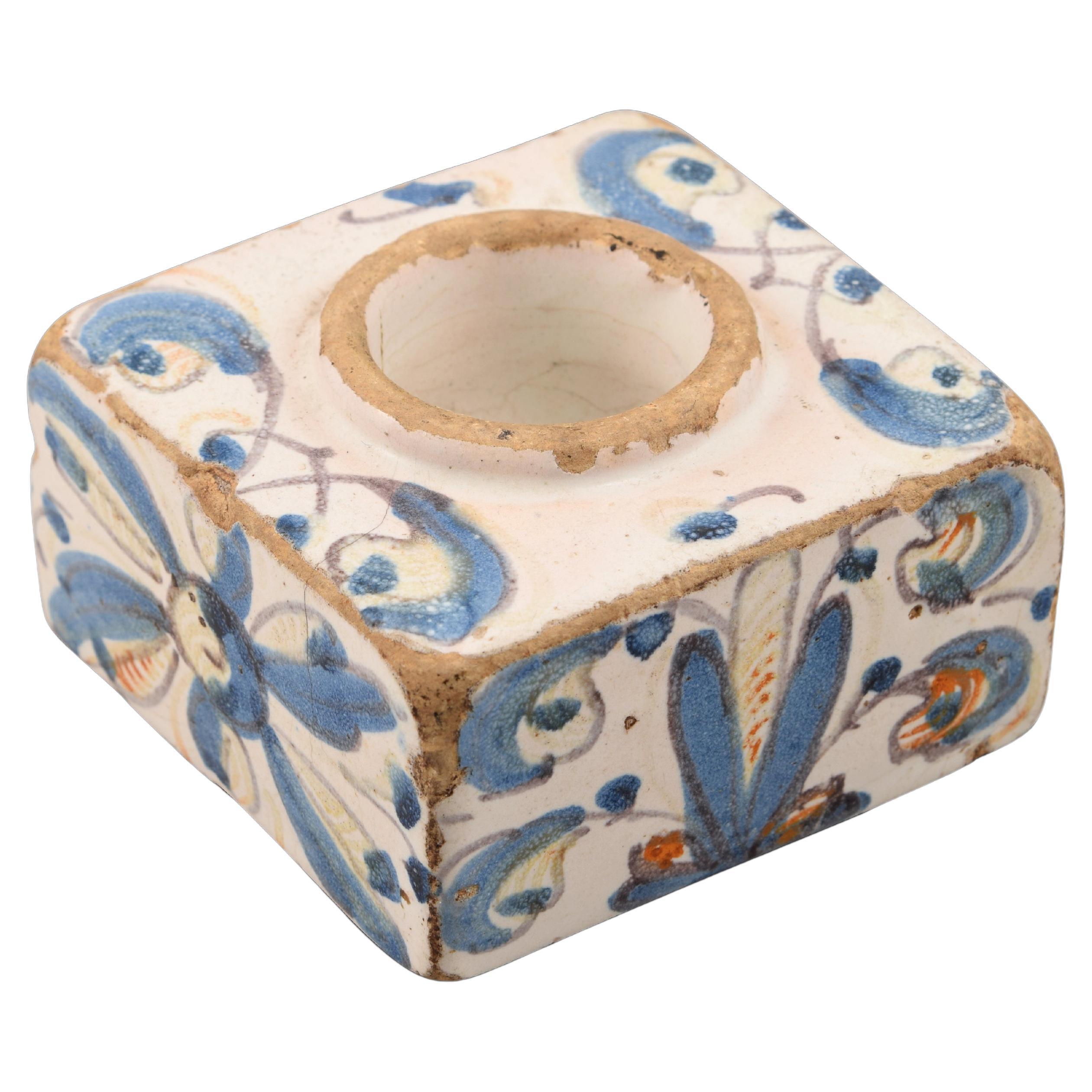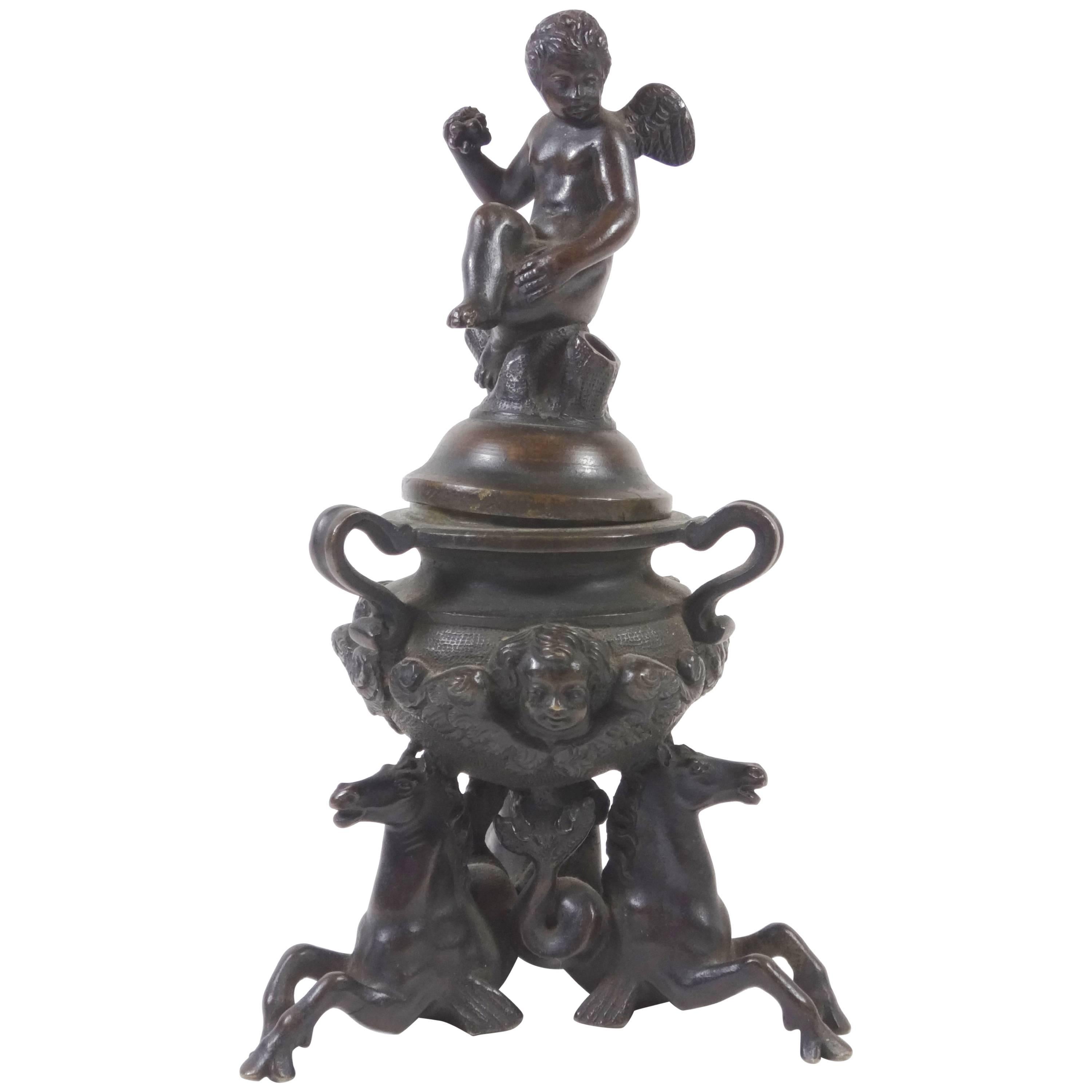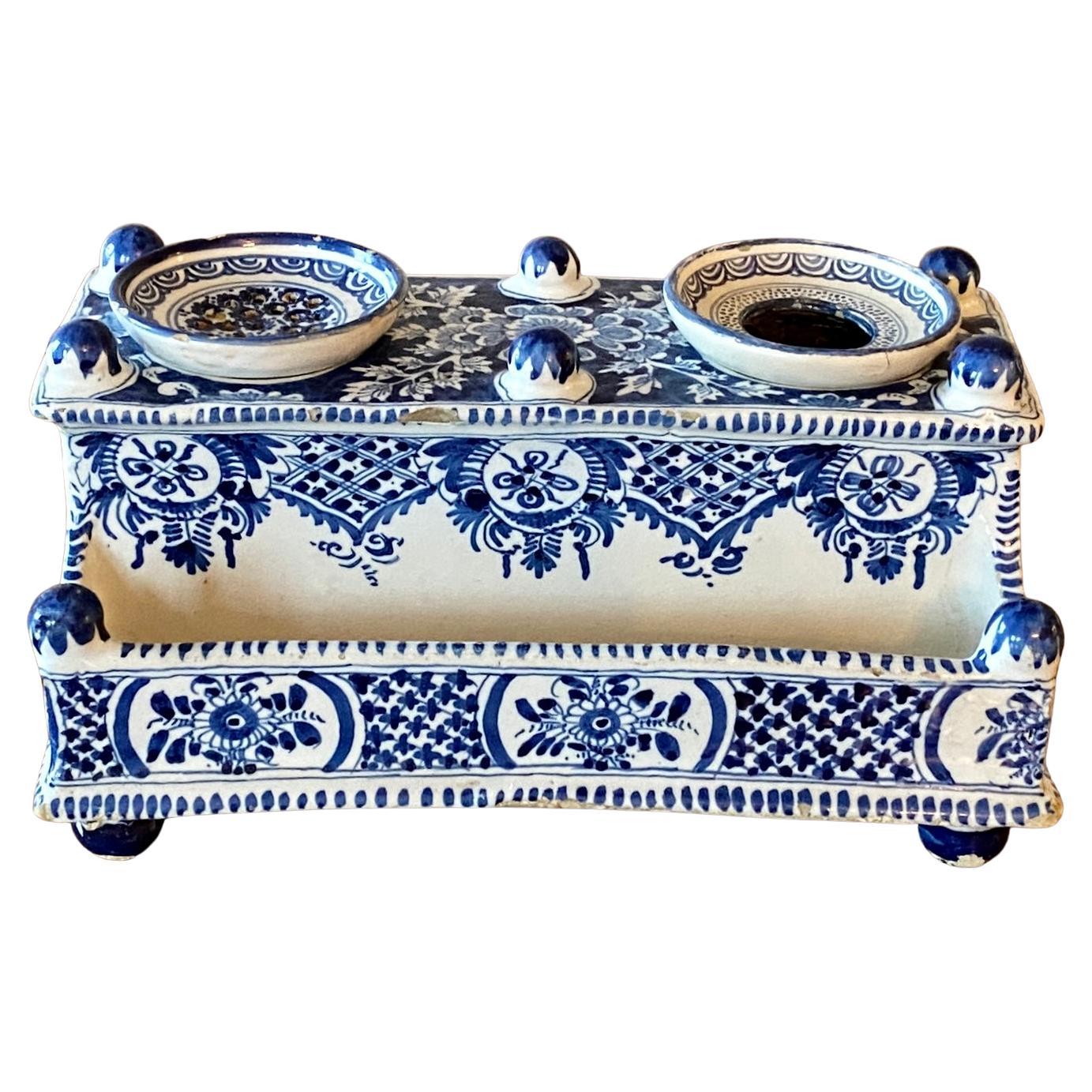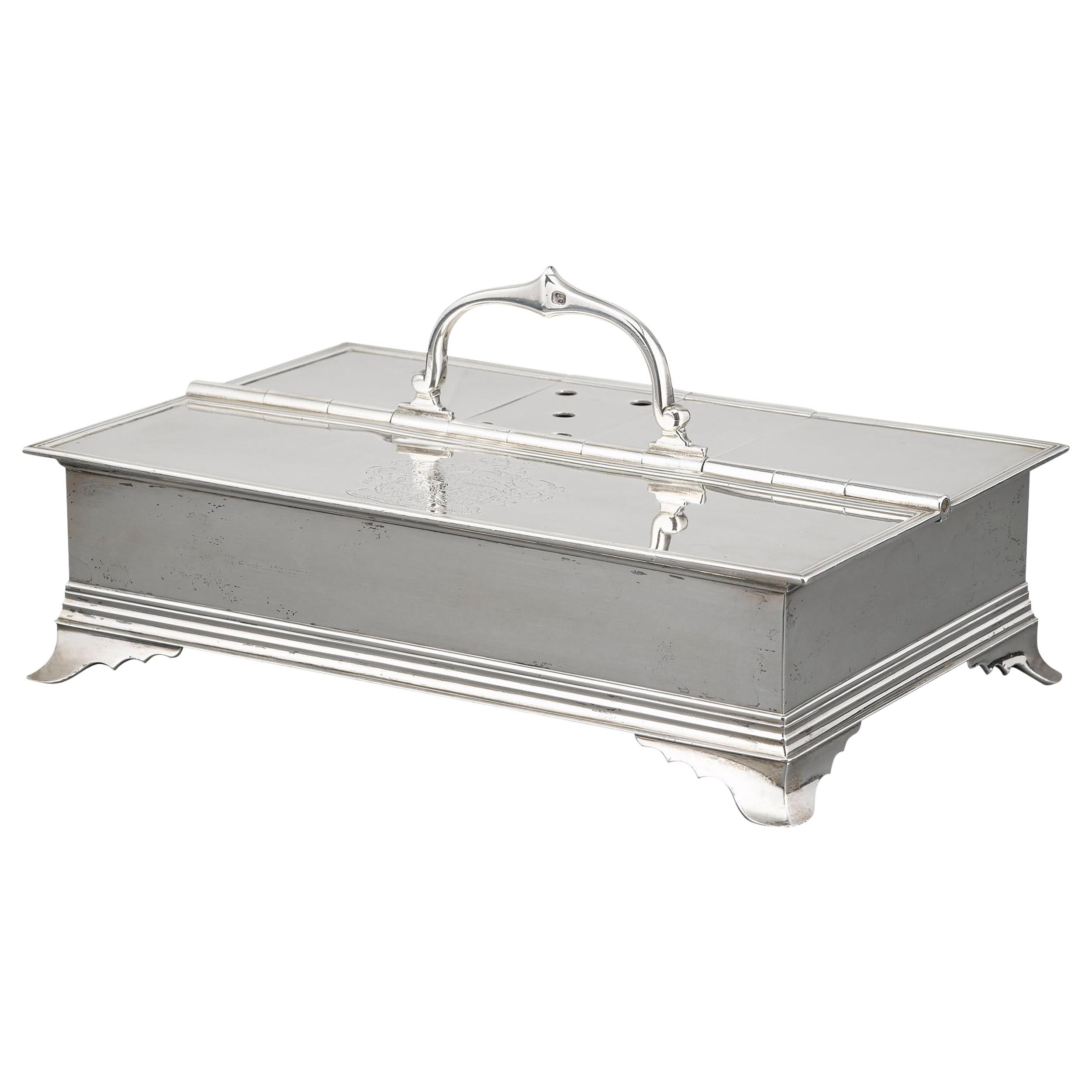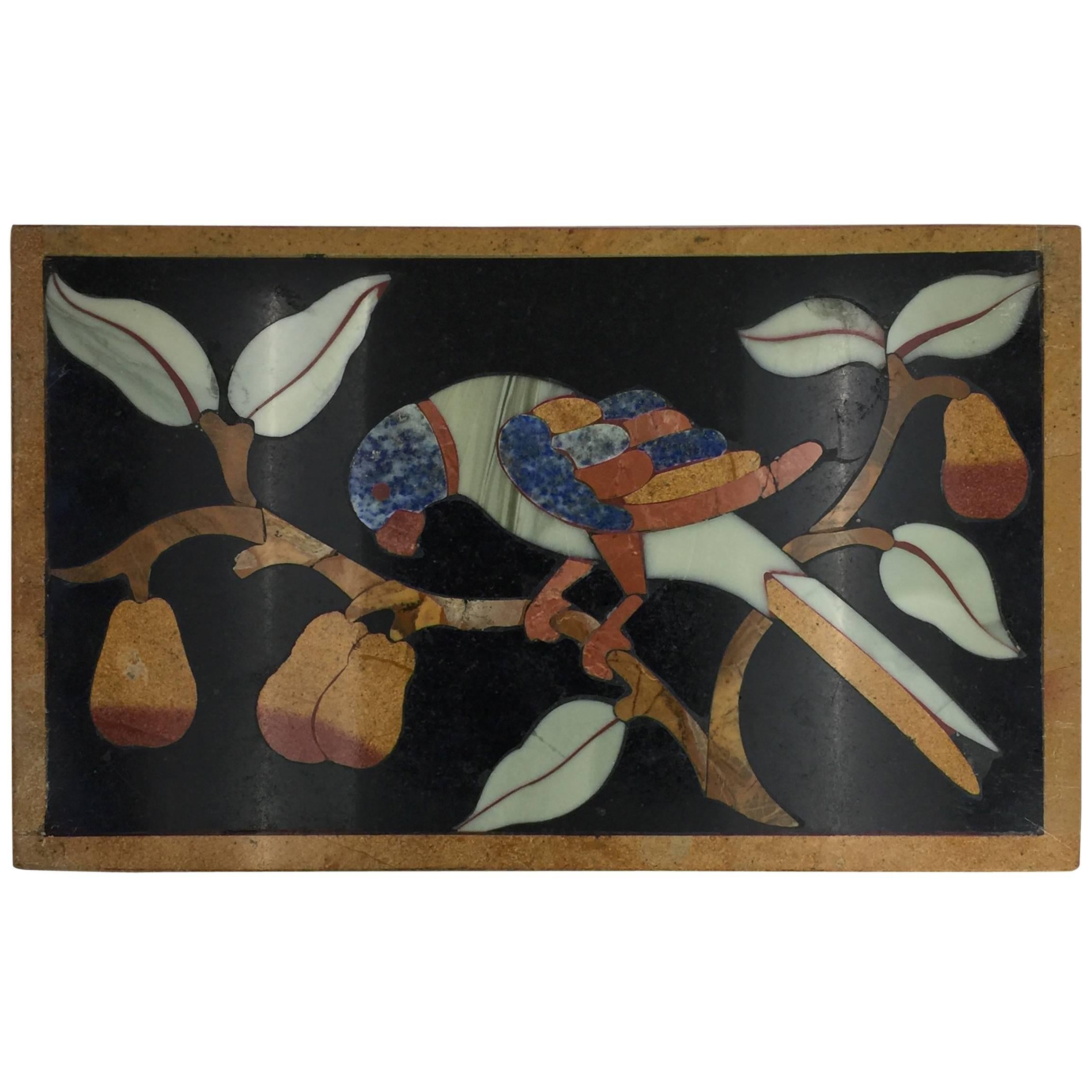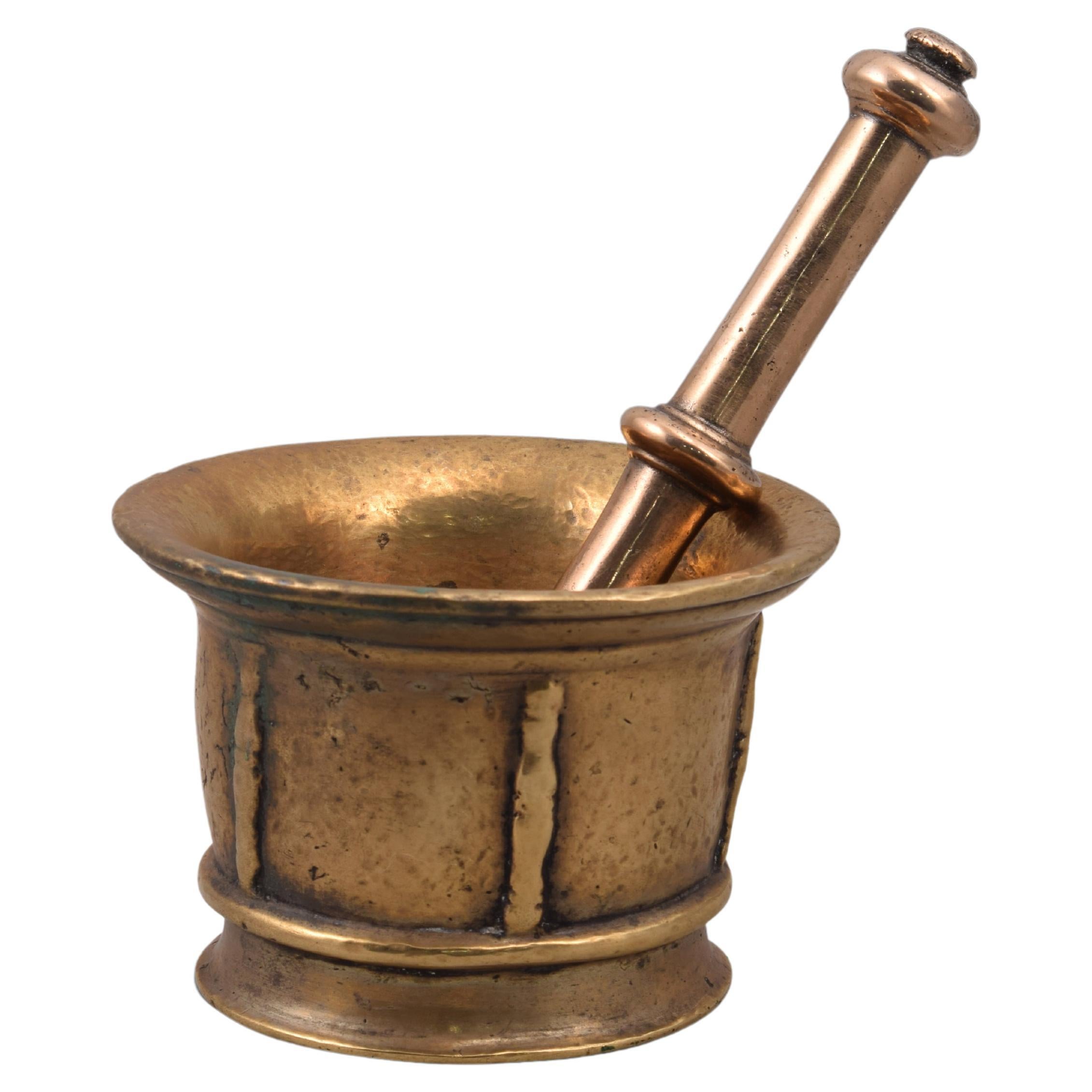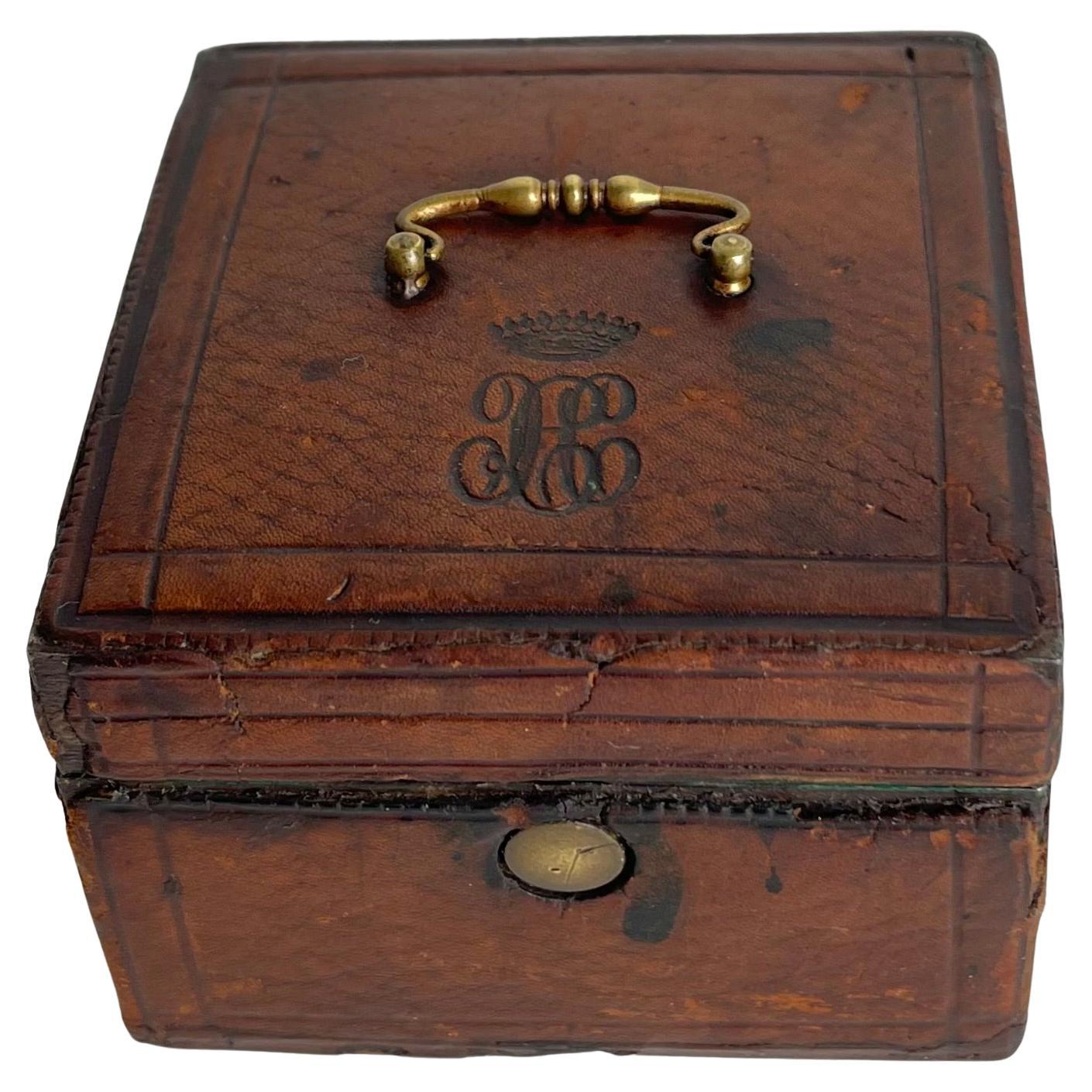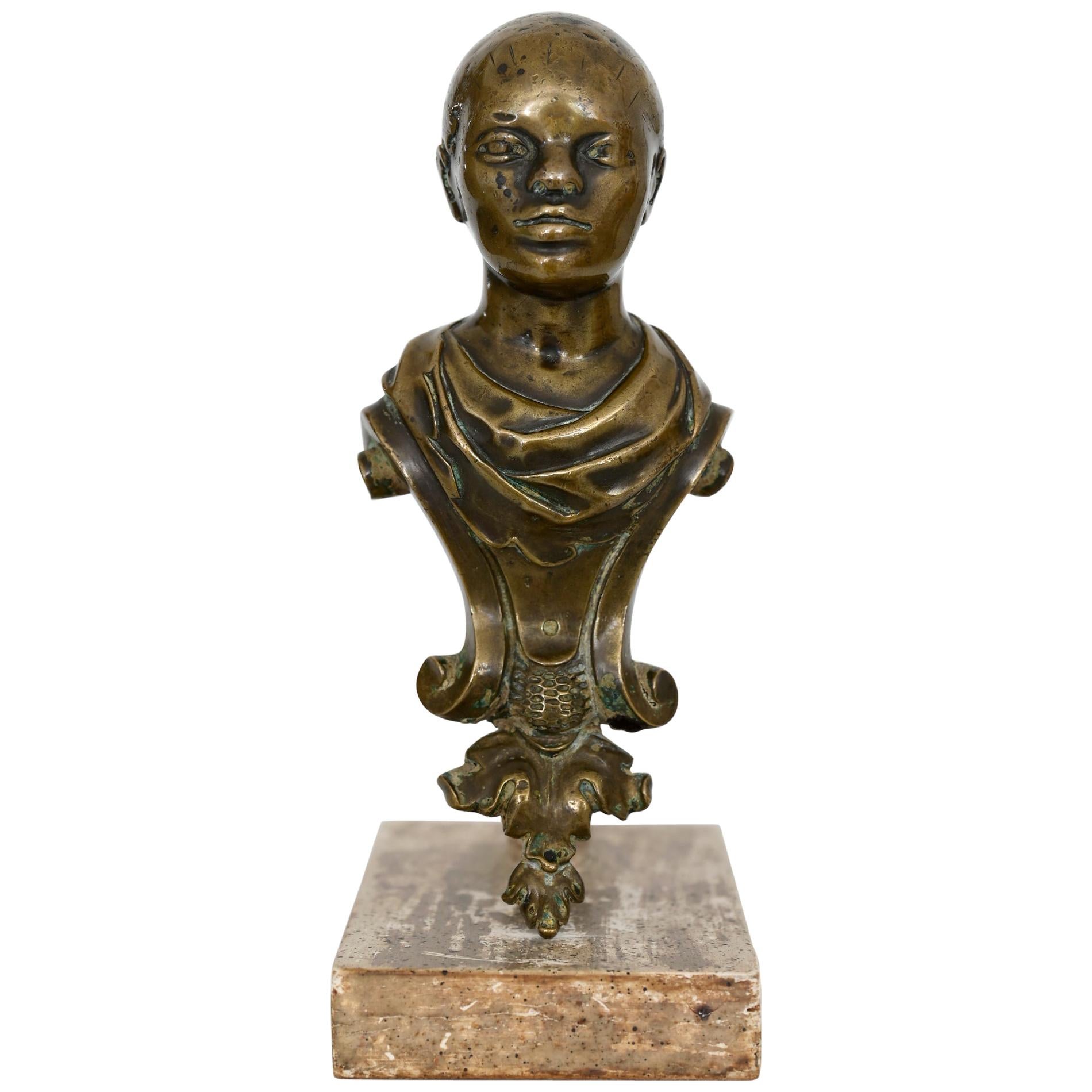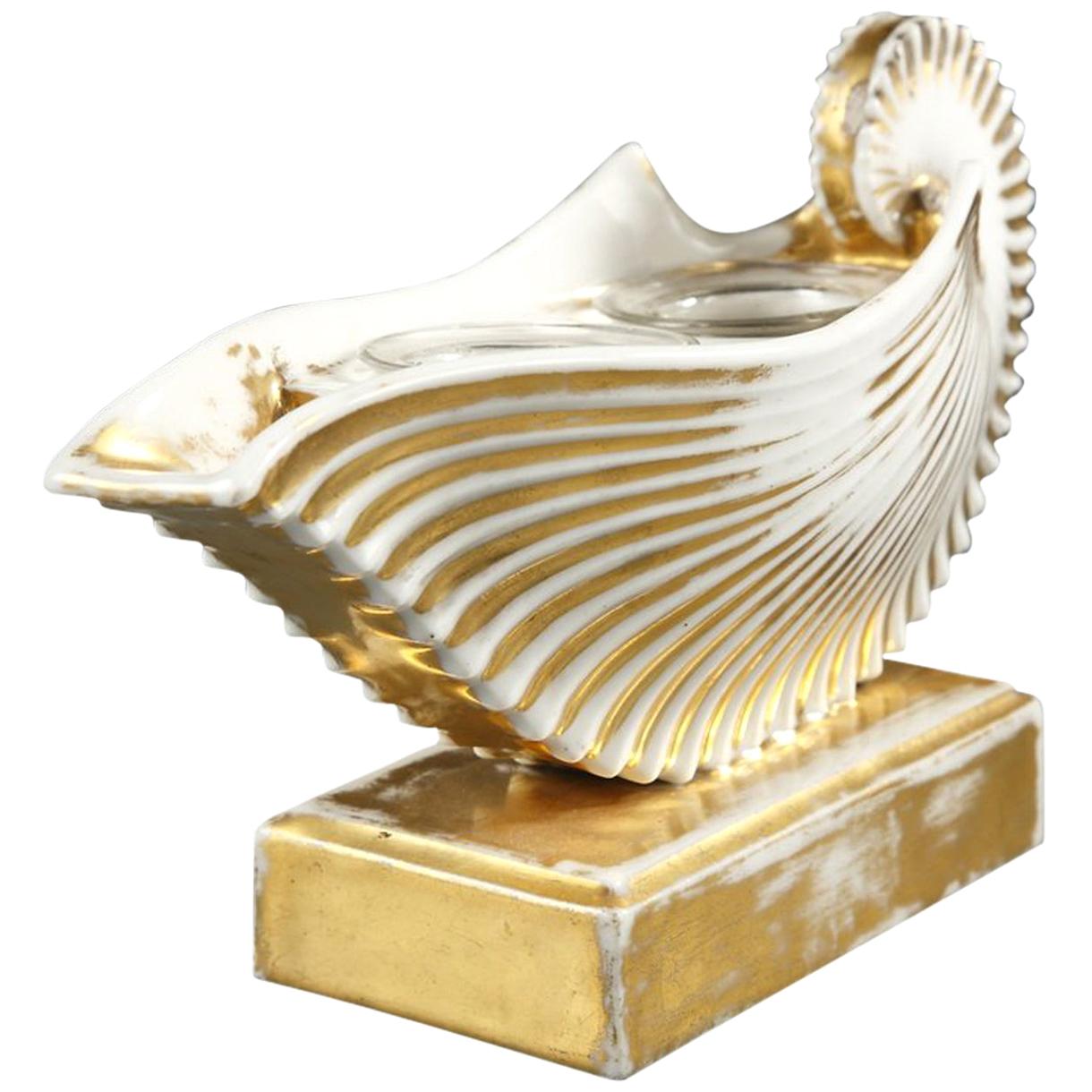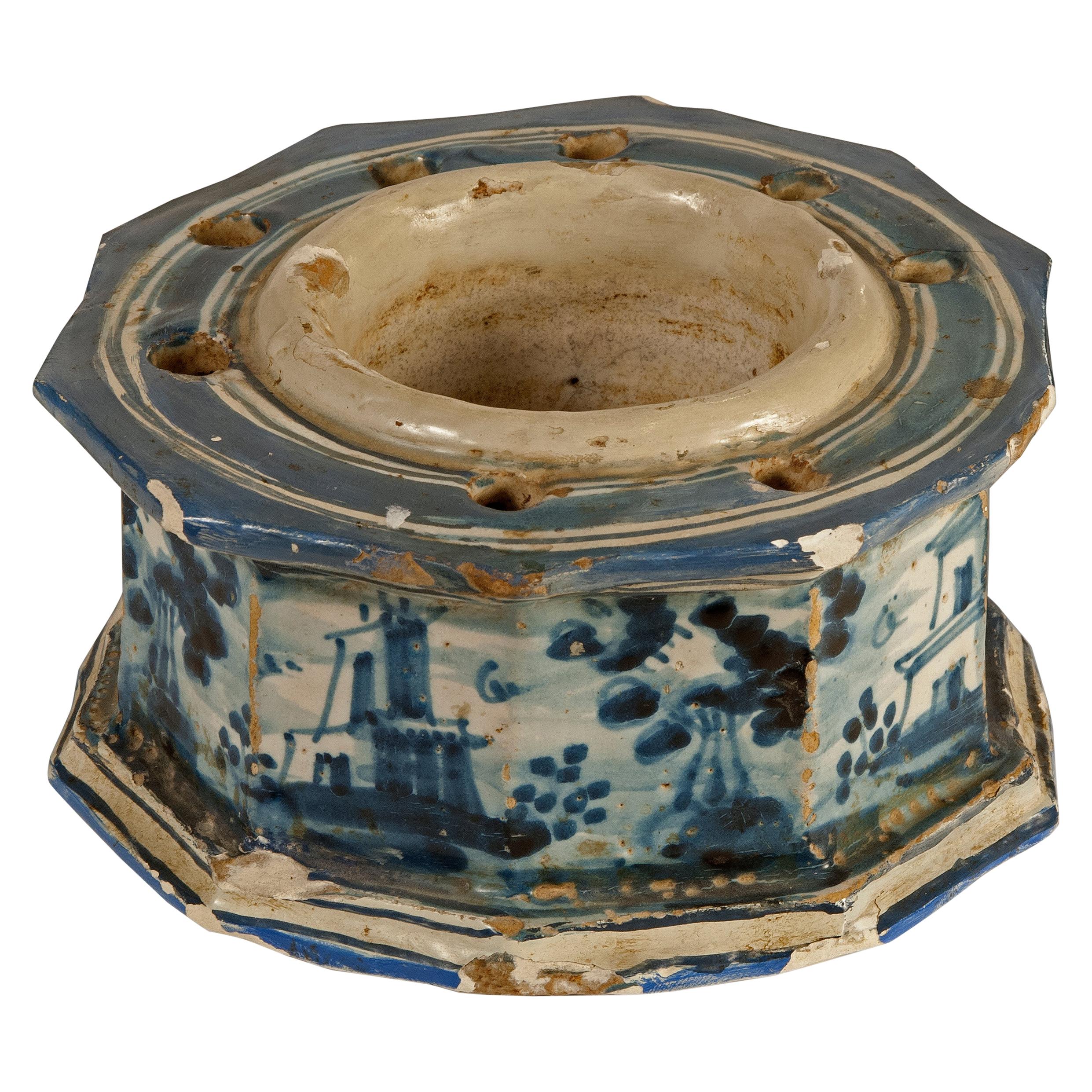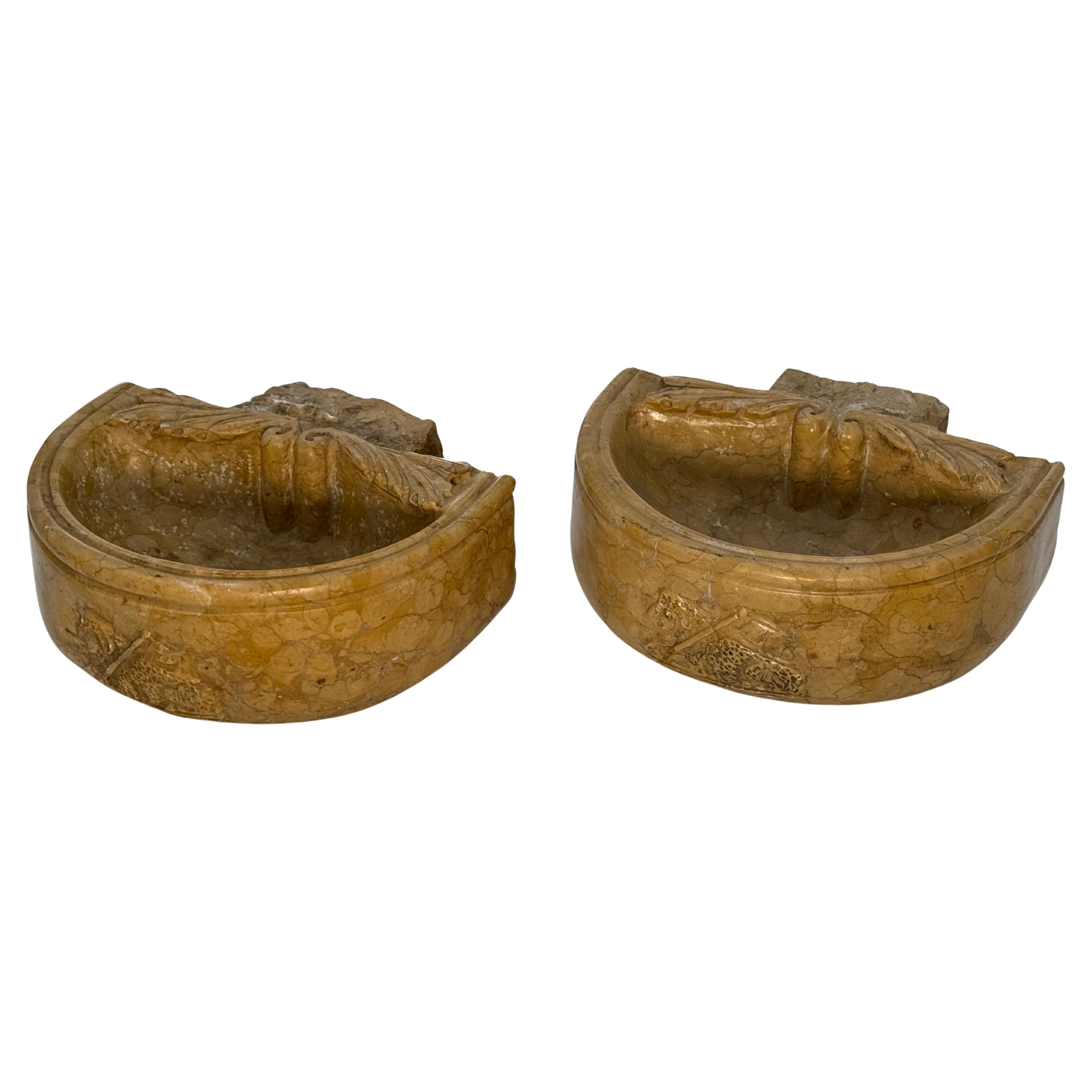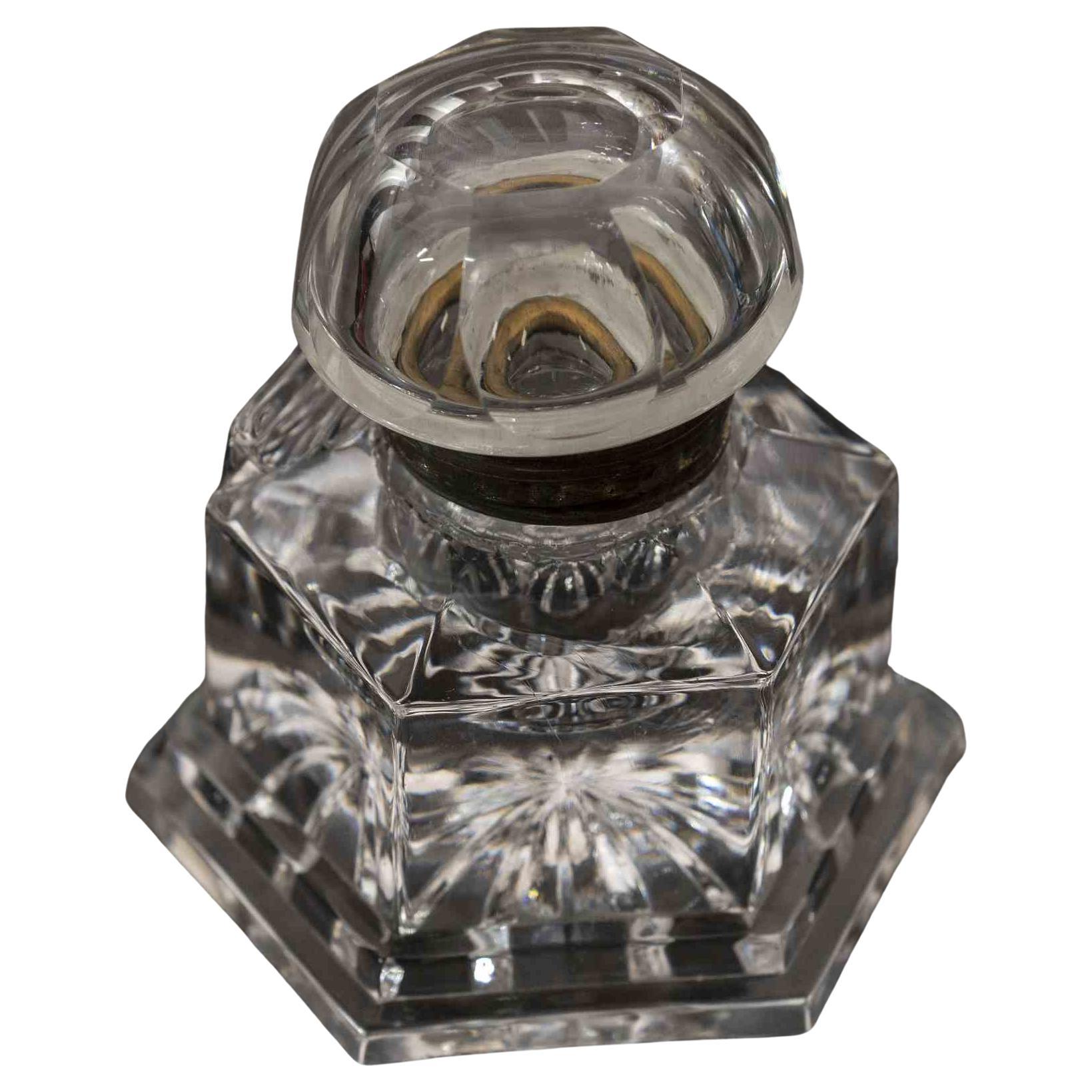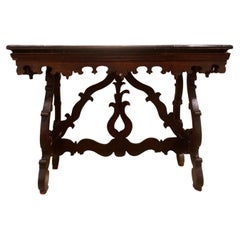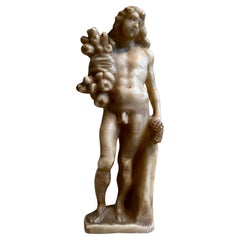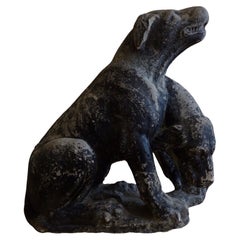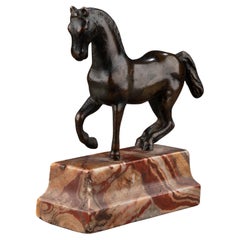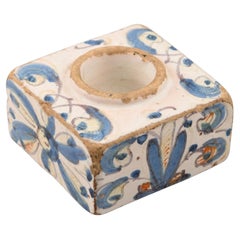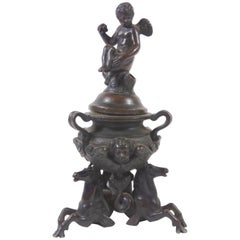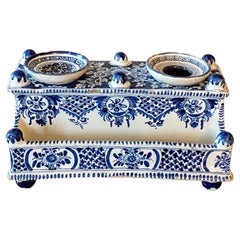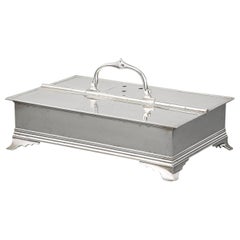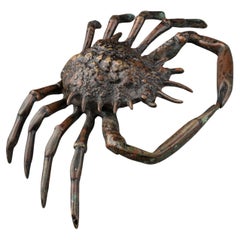
Crab-shaped inkwell - North of Italy, 17th–18th century
View Similar Items
Want more images or videos?
Request additional images or videos from the seller
1 of 9
Crab-shaped inkwell - North of Italy, 17th–18th century
$2,882.37List Price
About the Item
- Dimensions:Height: 5 in (12.7 cm)Width: 20 in (50.8 cm)Depth: 12 in (30.48 cm)
- Style:Baroque (Of the Period)
- Materials and Techniques:Bronze,Cast
- Place of Origin:
- Period:
- Date of Manufacture:18th century
- Condition:Wear consistent with age and use.
- Seller Location:Bruxelles, BE
- Reference Number:1stDibs: LU6666245054082
About the Seller
5.0
Vetted Professional Seller
Every seller passes strict standards for authenticity and reliability
1stDibs seller since 2022
15 sales on 1stDibs
Typical response time: 4 hours
Authenticity Guarantee
In the unlikely event there’s an issue with an item’s authenticity, contact us within 1 year for a full refund. DetailsMoney-Back Guarantee
If your item is not as described, is damaged in transit, or does not arrive, contact us within 7 days for a full refund. Details24-Hour Cancellation
You have a 24-hour grace period in which to reconsider your purchase, with no questions asked.Vetted Professional Sellers
Our world-class sellers must adhere to strict standards for service and quality, maintaining the integrity of our listings.Price-Match Guarantee
If you find that a seller listed the same item for a lower price elsewhere, we’ll match it.Trusted Global Delivery
Our best-in-class carrier network provides specialized shipping options worldwide, including custom delivery.More From This Seller
View All17th century wood and black marble table - North of Italy
Located in Bruxelles, BE
Walnut and marble table
North of Italy, 17th century
Wood and black marble
H 80,5 x L 114 x P 58 cm
This elegant table features a one single solid marble top directly mounted on f...
Category
Antique 17th Century Italian Baroque Side Tables
Materials
Marble
Bacchus - Southern Italy, late 17th century
Located in Bruxelles, BE
Bacchus
Southern Italy, late 17th century
Alabaster Sculpture
H: 20 cm
A finely carved 17th-century alabaster sculpture of a naked Bacchus. This Italian alabaster figure depicts ...
Category
Antique 17th Century Italian Baroque Figurative Sculptures
Materials
Alabaster
Cerberus, Italy, 17th Century
Located in Bruxelles, BE
Cerberus
Black painted stone
Italy, 17th century
Measures: 80 x 69 x 36cm
(one head missing)
Cerberus, cruel monster, fierce and strange,
Through his wide threefold throat barks as a dog
Over the multitude immers'd beneath.
His eyes glare crimson, black his unctuous beard,
His belly large, and claw'd the hands, with which
He tears the spirits, flays them, and their limbs
Piecemeal disparts (Dante, Inferno, Canto VI).
Cerberus figure seated, in his role of ferocious guardian of the underworld; he shows a nervous musculature, an adherent skin which reveals the ribs, long and robust limbs; his heads are broad and the eyes set well apart.
Painted in black to amplify his menacing look, the infernal guardian is depicted with his famous attributes, writhing his heads, growling and barking furiously.
Cerberus, in Greek mythology, was the monstrous watchdog of the underworld – also known as the “hound of Hades” – preventing the dead from leaving, and making sure that those who entered never left.
A child of Typhon and Echidna, he was part of a monstrous family, which included Orthus, the Lernaean Hydra, and the Chimaera as well. Only on three occasions Cerberus was tricked by visitors of Hades: Heracles did it with his strength, Orpheus with his music.
In "The Inferno", Dante places Cerberus as the guardian of the third circle of Hell. With his three mouths, Dante saw Cerberus as a beast that was synonymous with the sin of Gluttony. Virgil gets past the monster by throwing mud in his three mouths, temporarily choking him.
Very rare are the representations of Cerberus in ancient statuary...
Category
Antique 17th Century Italian Renaissance Figurative Sculptures
Materials
Stone
$19,816 Sale Price
25% Off
Pacing Horse - Italian School, 18th century
Located in Bruxelles, BE
Italian School, 18th century
Pacing Horse
Bronze with brown patina, on a rectangular marble base
H 8 x L 8,5 x P 3 cm
H totale 11 cm
Category
Antique 18th Century Italian Baroque Animal Sculptures
Materials
Marble, Bronze
Bronze salamander - 17th century
Located in Bruxelles, BE
Bronze salamander
Italy, 17th century
Patinated bronze
4 x 17 x 10 cm
This finely cast bronze salamander exemplifies the 17th-century fascination with naturalistic forms and animal ...
Category
Antique 17th Century Italian Renaissance Animal Sculptures
Materials
Bronze
Renaissance Marble Portrait - Northern Italy, 17th century
Located in Bruxelles, BE
Renaissance Marble Portrait
Northern Italy, 17th century, inspired by antiquity
Marble
36 x 13 cm (including the marble pedestal)
This Renaissance portrait head of a young man, sl...
Category
Antique 17th Century Italian Renaissance Figurative Sculptures
Materials
Marble
$9,607 Sale Price
20% Off
You May Also Like
Inkwell, Glazed Ceramic, Talavera de la Reina, Spain, 17th Century
By Talavera de la Reyna
Located in Madrid, ES
Inkwell. Glazed ceramic. Talavera de la Reina, Spain, 17th century.
Inkwell or spice rack with a square shaped hole that is made of glazed ceram...
Category
Antique 17th Century Spanish Baroque Inkwells
Materials
Ceramic
18th Century Venetian Bronze Figural Inkwell
Located in New York, NY
Patinated bronze urn-shaped inkwell rests on three winged-horses evoking movement and action. The body of the inkwell is decorated with faces among garlands and the lid is topped by a seated putti holding fruitVenetian patinated bronze figural inkwell...
Category
Antique 18th Century Italian Renaissance Inkwells
Materials
Bronze
Danish 18th Century Blue Faience Inkwell by Store Kongensgade
Located in Haddonfield, NJ
Rare Danish blue and white faience ink stand by Johan Ernst Pfau for Store Kongensgade Faience Manufactory, Copenhagen Denmark circa 1740. This inkwell retain with its original ink a...
Category
Antique Early 18th Century Danish Baroque Inkwells
Materials
Faience
18th Century Silver Inkwell by James Young
By James Young
Located in New Orleans, LA
This superlative, Georgian-period silver inkwell was crafted by 18th century London silversmith James Young. Of exceptional size and quality, this large inkwell is perfectly appointed to draft important correspondence, complete with a sand shaker and compartments for writing utensils. A masterpiece of the restrained Georgian style, the inkwell bears the marital coat-of-arms of the Gresley and Coventry families with the motto “Meliore fyde quam fortuna,” or “With better fidelity than fortune.” Hallmarked London, 1782 11 1/4” wide x 7 1/2” deep x 5 1/2” high The armorial bearings almost certainly commemorate the marriage of Sir Roger Gresley, the 8th Baronet of Drakelowe, and Lady Sophia Coventry, youngest daughter of the 7th Earl of Coventry...
Category
Antique 19th Century English Georgian Inkwells
Materials
Silver
Italian Pietre Dure Panel of Parrot on Branch, Late 17th Century
Located in Spencertown, NY
The Pietre Dure panel inset with lapis lazuli, marmo giallo, in a rectangular shape, probably a panel from a cabinet.
Category
Antique Late 17th Century Italian Baroque Decorative Art
Materials
Marble
Bronze Mortar with Pestle, Spain, 17th Century
Located in Madrid, ES
Mortar with hand. Bronze. XVII century.
Mortar with a circular base, cylindrical body and slightly outwardly flared mouth, decorated with a series of smooth horizontal moldings arranged both in the lower and upper areas and with simple vertical elements (which still maintain slight balustraded shapes) derived from of the ribs that these specimens used to have in the medieval Spanish...
Category
Antique 17th Century Spanish Baroque Scientific Instruments
Materials
Bronze, Other
Recently Viewed
View AllMore Ways To Browse
Bronze Crab
17th Century Italian Desk
17th Century Inkwell
Andrea Riccio
Bronze Crab Inkwell
Crab Inkwell
Antique Chinese Inkwell
Antique Dog Inkwell
Antique Brass Pen Holder
French Enamel Inkwell
Victorian Inkstand
Antique Bronze Double Inkwell
Brass Double Inkwell
Antique Copper Inkwell
Antique Pewter Inkwell
Victorian Silver Pens
Bronze Enamel Tray
Sterling Silver Ink Stand
